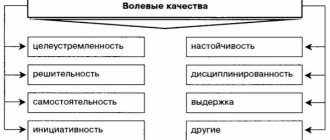Working on projects, especially large ones, requires a lot of resources - not so much financial as mental. Any project manager will confirm this; in such situations, a unique tool will come in handy, which will allow you to visualize the entire project, break it down into small steps and gradually move towards the goal - its implementation. An excellent example is mind maps, and we’ll talk about them today.
Story
Prototypes of mind maps are found in the works of ancient philosophers. Thus, one of the earliest graphical representations of complex information was developed by Porphyry of Tyros (3rd century AD), who streamlined the concept of categories in Aristotle's philosophy. At the end of the 50s of the 20th century, semantic networks were created to describe the learning process. Tony Buzan began developing the idea of mind maps in the early 70s. The main provisions of the concept were first presented in the book “Use Your Head” (1974), (“Work with your head”). This book formed the basis of “The mind map book” (1993) (“Superthinking”, 2003), written with his brother Barry Buzan. “My main contribution,” wrote Barry, “was to tidy up the structure of the book; I am also the originator of the idea that the true power of mind maps lies in the use of basic ordering ideas." Tony Buzan wrote about 80 books on the theory of mind maps, including: Speed Memory (1977), Make the Most of Your Mind (1984), Speed Reading (1971), The Mind Map Book (1993), The Memory Book (2010), Mind Maps for Business (2010), Brain Training for Kids (2012), The Most Important Graph in the World (2012), Modern Mind Mapping for Smarter Thinking e-book (2013). Currently, mind maps are compiled by businessmen, scientists, teachers, engineers, designers and people of many other professions. Tony Buzan has written on topics related to brain function, genius quotient (GQ), spiritual intelligence, memory, creativity, and speed reading. Tony Buzan was the founder and president of The Brain Foundation and the Mind Sports Olympiad. He created his own software to support mind mapping called iMindMap in December 2006. More than 200 computer programs have already been created for creating mind maps.
Programs
We have prepared for you a selection of the 20 best mind-dapping services.
Shareware
If you have just begun your acquaintance with mind maps, we recommend that you first test free programs for creating maps. There are as many as 12 of them in our selection, and everyone can choose something to their liking.
MindMeister
MindMeister
Description: MindMeister is a classic online mind mapping tool with wide functionality and teamwork capabilities.
Features of the application: The mapping program is pleasant to use, the platform interface is simple and intuitive. The functionality is quite high, and for personal use it will be more than enough.
| Application type | operating system | Free period | Price | Synchronization with the cloud | Russified version | Simplicity of the interface | Creating a presentation | Educational materials |
| Online and offline | Web, iOS, Android | Indefinitely | From $4.99 to $12.49 per month | Yes | Yes | Yes | Yes | No |
Usage: Project planning, meeting management, brainstorming, note-taking, knowledge management.
MindMup
MindMup
Description: The Mind Map contains all the standard features for creating mind maps, as well as free export to PDF and synchronization of maps in your account from different devices via Google Drive.
Features of the application: A very comfortable platform for any user. Simple management, you can customize the design to your liking, free export and synchronization with Google cloud.
| Application type | operating system | Free period | Price | Synchronization with the cloud | Russified version | Simplicity of the interface | Creating a presentation | Educational materials |
| Online and offline | Web, Windows | Indefinitely | From $2.99 to $8.33 monthly | Yes | No | Yes | Yes | Yes |
Uses: Individual note-taking, collaborative planning, collaboration, classroom management.
Coggle
Coggle
Description: Multi-user platform for creating branched and multi-center mind maps. A non-conservative and stylish mind mapping tool.
Features of the application: Limited but comfortable functionality designed for convenient and fast online collaboration. Therefore, this service is most suitable for team work.
| Application type | operating system | Free period | Price | Synchronization with the cloud | Russified version | Simplicity of the interface | Creating a presentation | Educational materials |
| For online use only | Web | Indefinitely | $5-$8 per month | Yes | No | Yes | Yes | No |
Area of use: Taking notes, brainstorming, project work in a team.
Simplemind
Simplemind
Description: A powerful service with wide functionality and free use, which is great for both individual and corporate use.
Features of the application: The application is filled with various tools for creating unique and convenient mind maps. Also, when downloading, you can set the Russian language for the application, which will greatly simplify working with it.
| Application type | operating system | Free period | Price | Synchronization with the cloud | Russified version | Simplicity of the interface | Creating a presentation | Educational materials |
| Download only | Windows, MacOS, IOS, Android | Indefinitely | From 6.99 to 899 euros one-time | Yes | Yes | Yes | Yes | Yes |
Area of use: Project management, knowledge structuring, brainstorming, task list.
The Brain
The Brain
Description: A completely free application for creating mind maps with a large number of necessary options and the ability to create a unique design.
Features of the application: A pleasant and easy-to-use service that allows you to work both individually and jointly thanks to synchronization via Google cloud. In addition, the service provides comprehensive job training.
| Application type | operating system | Free period | Price | Synchronization with the cloud | Russified version | Simplicity of the interface | Creating a presentation | Educational materials |
| Download only | Windows, MacOS | Indefinitely | Completely free | Yes | Yes | Yes | Yes | Yes |
Area of use: Associative mapping, calendar of events and reminders, project management, teamwork, business process management.
Mind42
Mind42
Description: Classic design and strict design are perfect for use by companies with a formal internal organization.
Application features: Classic application with standard tools for creating mind maps.
| Application type | operating system | Free period | Price | Synchronization with the cloud | Russified version | Simplicity of the interface | Creating a presentation | Educational materials |
| Online only | Web | Indefinitely | Completely free | Yes | No | Yes | No | Yes |
Area of use: Creating task lists, brainstorming, organizing events.
Bubble
Bubbl
Description: A visual thinking tool for structuring information, helping you better understand, remember and generate new ideas.
Features of the application: The service is extremely easy to use, but the best part is that you can use it in test mode without downloading or registering, which allows you to evaluate how suitable this particular tool is for you.
| Application type | operating system | Free period | Price | Synchronization with the cloud | Russified version | Simplicity of the interface | Creating a presentation | Educational materials |
| Online only | Web | Indefinitely | $4.91 monthly | Yes | No | Yes | Yes | Yes |
Area of use: Knowledge management, brainstorming, idea generation, team work on a project.
Comapping
Comapping
Description: Comapping is online mapping and information management software. Simple and convenient software, which, by the way, is Russified and will be easy to use for Russian-speaking users.
Features of the application: A classic mind-dapping application in its presentation, the main feature of which is the ability to simultaneously work with a huge number of users (up to a hundred people).
| Application type | operating system | Free period | Price | Synchronization with the cloud | Russified version | Simplicity of the interface | Creating a presentation | Educational materials |
| Online and offline | Web, Windows, MacOS, Linux | Indefinitely | From $25 to $1225 annually | Yes | Yes | Yes | No | Yes |
Area of use: Education management, taking notes and organizing the day, corporate meetings, business process management.
WiseMapping
WiseMapping
Description: A service for creating mind maps in vector graphics with completely free use. The application is focused on managing training or business processes.
Features of the application: Quite wide functionality and ease of use. There is no need to download the application, and the whole team can work online.
| Application type | operating system | Free period | Price | Synchronization with the cloud | Russified version | Simplicity of the interface | Creating a presentation | Educational materials |
| Online only | Web | Indefinitely | Completely free | Yes | No | Yes | Yes | Yes |
Area of use: Knowledge and education management, brainstorming, task list creation, schedule management, business and project management.
Mapul
Mapul
Description: One of the few original and non-standard services for creating mind maps. Mapul invites you to use a creative approach in your work and provides an arsenal of tools to create a unique design.
Features of the application: Unusual design of the generated mind maps. The tool allows you to create “organic” mind maps, and the visualization variations are amazing.
| Application type | operating system | Free period | Price | Synchronization with the cloud | Russified version | Simplicity of the interface | Creating a presentation | Educational materials |
| Online only | Web | Indefinitely | from $25 to $50 | Yes | No | Yes | Yes | No |
Area of use: Brainstorming, idea generation, teamwork, creating business presentations.
Draw
Draw
Description: Online utility for creating and working with mind maps. The service has a simple interface, a wide range of functions and a sufficient number of tools for personal use.
Features of the application: The service does not require installation or registration, and is also completely free, which makes it incredibly convenient. However, it is hardly suitable for multi-user and - moreover - corporate use.
| Application type | operating system | Free period | Price | Synchronization with the cloud | Russified version | Simplicity of the interface | Creating a presentation | Educational materials |
| Online only | Web | Indefinitely | Completely free | Yes | No | No | No | No |
Area of use: Mapping thoughts, creating a task list, knowledge management, task management, goal achievement, project management.
Loopy
Loopy
Description: A creative program for creating original mind maps. The application allows you to create unique designs for your mind maps, providing numerous variations in the use of text, graphic and color elements.
Features of the application: The service is unique in its ability to add animations, as well as creative elements for creating a mind map.
| Application type | operating system | Free period | Price | Synchronization with the cloud | Russified version | Simplicity of the interface | Creating a presentation | Educational materials |
| Online only | Web | Indefinitely | Completely free | Yes | Yes | Yes | No | No |
Area of use: Information organization, knowledge management.
Paid
If you are an advanced user of services for creating mind maps, and the functionality of free applications is not enough for you, then catch a selection of paid services.
MindGenius
MindGenius
Description: A tool that allows you to create and prioritize ideas, as well as develop projects, task lists and manage them.
Features of the application: In addition to the application, the service provides the opportunity for full training in project management and finding optimal solutions. This is an important addition for corporate mind mapping.
| Application type | operating system | Free period | Price | Synchronization with the cloud | Russified version | Simplicity of the interface | Creating a presentation | Educational materials |
| Download only | Microsoft, MacOS, Linux | 7 days | $256 one time | Yes | No | Yes | Yes | Yes |
Area of use: Strategy development, project planning, achieving personal goals, project management, financial and business process management.
XMind
XMind
Description: XMind is a full-featured mind mapping and brainstorming tool. The service is quite popular and is supported by various platforms, but the interface is in English.
Features of the application: Comfortable to use and undemanding tool for the user. The interface is not overloaded and intuitive, and will be useful for both personal and corporate use. There are not enough options.
| Application type | operating system | Free period | Price | Synchronization with the cloud | Russified version | Simplicity of the interface | Creating a presentation | Educational materials |
| Download only | Windows, MacOS, Linux, Android, IOS | 7 days | from $1.24 to $4.99 per month | No, only local network | No | Yes | Yes | No |
Area of use: Time management and Gantt charting, business charts, presentations.
MindJet
MindJet
Description: An application completely Russified by the developers for creating mind maps designed for information management, business process planning and other purposes.
Features of the application: The functionality of the service is amazing, and the application will become a serious assistant for managers. The tool is absolutely not suitable for personal use; many options are intended for team work.
| Application type | operating system | Free period | Price | Synchronization with the cloud | Russified version | Simplicity of the interface | Creating a presentation | Educational materials |
| Download only | Windows, MacOS | 30 days | Windows – 30,000 rub., Mac – 15,600 rub. | Yes | Yes | No | Yes | No |
Area of use: Creative approach to problem solving, productivity, information and knowledge management, task and project management, business planning, purchasing.
iMindMap
iMindMap
Description: An English-language application that focuses on creativity and the visual component, which allows you to create beautiful mind maps.
Features of the application: The main advantage of iMindMap is the incredible design of the elements. It is this platform that allows you to unleash the creative potential of mind maps at 100%.
| Application type | operating system | Free period | Price | Synchronization with the cloud | Russified version | Simplicity of the interface | Creating a presentation | Educational materials |
| Download only | Windows, MacOS | 7 days | 80-250 euros one-time | Yes | No | Yes | No | Yes |
Area of use: Task visualization, project planning, brainstorming
ConceptDraw
ConceptDraw
Description: The service is a powerful software package designed specifically for business managers of all types, as well as for a comprehensive solution to any business problems.
Features of the application: The service integrates three products: DIAGRAM v12 - for any business; MINDMAP v10 – for strategic planning, knowledge and team management; PROJECT v9 – a professional approach to project management.
| Application type | operating system | Free period | Price | Synchronization with the cloud | Russified version | Simplicity of the interface | Creating a presentation | Educational materials |
| Download only | Windows, MacOS | No | From $75 to $499 | Yes | Yes | No | Yes | Yes |
Area of use: Business analytics, building infographics, data modeling, control and CRM analytics, decision making, process flow diagrams, etc.
Mindmanager
Mindmanager
Description: Russian-language professional tool for business process management, which provides all the tools necessary for business monitoring when creating a mind map.
Application features: MindManadger is a service designed for corporate use and operation by professional managers.
| Application type | operating system | Free period | Price | Synchronization with the cloud | Russified version | Simplicity of the interface | Creating a presentation | Educational materials |
| Download only | Windows, MacOS | 30 days | from $214 to $418 | No | Yes | No | No | No |
Area of use: Brainstorming, data visualization, flowcharts, project management.
PersonalBrain
PersonalBrain
Description: Utility for creating mind maps and idea management concepts. Great for project management as it allows you to create timelines and resource lists based on your mind map.
Features of the application: PersonalBrain has a simple and intuitive interface, and also allows you to define time intervals for the implementation of “branches” of the map and determine the necessary resources for each branch.
| Application type | operating system | Free period | Price | Synchronization with the cloud | Russified version | Simplicity of the interface | Creating a presentation | Educational materials |
| Download only | Windows, MacOS | 30 days | $303 one time | Yes | No | Yes | No | No |
Area of use: Integrating all sources of information into one visual environment (suitable for teachers), building key relationships and analyzing them (suitable for business).
NovaMind
NovaMind
Description: A stylish service for planning, mapping thoughts and managing your schedule with a wide graphic arsenal and the ability to create original design solutions.
Features of the application: The tool has an extremely nice design and comfortable interface. The service is convenient to use due to hints at each stage of mind-dapping.
| Application type | operating system | Free period | Price | Synchronization with the cloud | Russified version | Simplicity of the interface | Creating a presentation | Educational materials |
| Online only | Web | Absent | $6-$7 monthly | Yes | No | Yes | Yes | Yes |
Area of use: Planning events, organizing thoughts, managing knowledge and information.
Essence of the method
Mind maps are a convenient and effective technology for depicting, structuring and analyzing complex information, presenting it in an easily perceptible visual form and generating new creative ideas on this basis. Existing and new information, according to a certain algorithm, is depicted in a graphical form that reflects semantic, associative and cause-and-effect relationships between concepts, parts of the problem or subject area under study. The method is an effective technique of creative thinking, a process and a way of obtaining new knowledge.
Main characteristics of the method:
1. The object of attention and study is crystallized in the central image. 2. The main themes diverge from the central image in the form of branches. 3. Branches that take the form of smooth lines are designated and explained with key words or images. Secondary, tertiary, and subsequent ideas are also depicted as sub-branches branching off from higher-order branches. 4. The branches form a connected nodal structure.
Purpose of the method:
Structuring and visualizing information, as well as stimulating a wide variety of new ideas.
MindMup (Web)
The best tool for creating public mind maps
The MindMup toolbar is easy to use, with quick links for all your basic needs - from changing the color of each node to adding detailed text and attaching a file. However, the service stands out among its competitors due to its other capabilities.
Many mind map services require at least an email address to work, but MindMup allows you to create mind maps and share them with other users without even logging in. The free cards are automatically deleted after six months, but if you're using it for a short-term project, this is a great option. You can also install the Google Drive add-on to enhance sharing and team collaboration.
How much does it cost : free for cards up to 100 KB; from $2.99 per month for MindMup Gold, which includes large maps and teamwork.
Main functions
Mind mapping is a universal way to activate the creative process and is used in any type of mental activity in order to increase its productivity. Thus, smart maps are used in such areas of life as business, management and group events, education and interpersonal communication. Mind maps significantly improve the quality and effectiveness of such activities as: 1. Collective and individual creativity, solving practical and interpersonal problems. 2. Simulating the creative process, generating and developing new ideas 3. Planning or developing a strategy by drawing up a plan. 4. Annotating and systematizing the information received. 5. Analysis of complex situations, thinking and solving problems, 6. Decision making and project development. 7. Writing a report, preparing speeches and presentations. 8. Taking notes of texts, lectures, speeches, negotiations. 9. Self-analysis and personal development.
Mindly (macOS, iOS, Android)
The best solution for mobile devices
Working with mind maps on mobile devices is usually a bit of a pleasure. This is due to the small screen size; reading, scrolling and editing new elements is very inconvenient. But Mindly has arranged everything in such a way that working with cards ceases to be a painful process, but, on the contrary, even resembles some kind of game.
As with all mind maps, you start with a central element and gradually begin to add new ones, changing the text, color and icons as you go. If you want to go deeper into a child idea, simply click on its circle to have Mindly zoom in on that area—then you can focus on that level. The process resembles delving into a microcosm. Don’t worry, you can return to the “core”, that is, the general view, using the button in the upper left corner.
You can synchronize your mobile mind maps with the desktop version of Mindly - that is, once you start working on your smartphone, you can continue it on your desktop.
How much does it cost : The free mobile version includes up to 200 items per smart card. Paid plans: $6.99 on iOS for additional features including unlimited items, passcode, and search; $29.99 - for macOS.
Methodological and theoretical foundations
1. Radiant thinking. The creation of mind maps is based on the natural process of radiant thinking. The term "radiant thinking" refers to associative thought processes that have a central object as their starting point or point of application. Our thoughts, like rays or radiants, diverge from it along chains of associations. Each word, image, symbol becomes the center of the next association, and the entire process of constructing a map is a potentially endless chain of branching associations emanating from the “center to the periphery.” The concept of radiant thinking reflects the natural structure of our brain and the processes occurring in it, in which and this is the main secret of their effectiveness. The brain of any person has approximately a trillion cells - neurons. Each neuron is somewhat reminiscent of an octopus, which, in addition to the body itself, may have several tens, hundreds, or even thousands of “tentacles.” Mind maps are a model and graphic expression of radiant thinking. 2. Associative thinking. The construction of mind maps is based on the basic patterns of the emergence and development of associations. With the help of the development of spontaneously arising associations, ideas of the second, third and fourth levels are formulated, related contents and solutions are connected with each other. When creating mind maps, the boundless associative and creative nature of the human brain is realized. 3. Laterality, functional specialization of the cerebral hemispheres. The process of creating a mind map stimulates creativity because both the right and left hemispheres of the brain are actively involved in its creation, which does not happen when making regular lists. The effectiveness of mind maps is ensured by the use of both hemispheres of the brain, the simultaneous activation of imagination and analysis, figurative and verbal presentation of information. To create complex mind maps, you must first associate, generate ideas, and then structure them. Generating ideas is much more complex than structuring, organizing and editing the same ideas. After enough ideas have been generated, the thoughts are organized, including by assigning each of them its own number. 4. Visual thinking. Drawing up a mind map can be called visualization of thinking. The word imagination itself comes from the Latin imaginari, literally meaning “to picture in one’s mind.” In this sense, the advantages of mind maps are: 1. Visualization. The whole problem with its many sides and facets is right in front of you, you can take it in at a glance. 2. Attractiveness. A good mind map has its own aesthetics; looking at it is not only interesting, but also pleasant. Tony Buzan recommended: “Get ready to create beautiful mind maps.” 3. Memorability. Thanks to the work of both hemispheres of the brain, the use of images and colors, the mind map is easy to remember. 5. Understanding of thinking in Gestalt psychology , which is based on the idea of the primacy of integral structures (Gestalts) in relation to their components. Thinking is considered as the ability of the brain to perceive, process and remember information through holistic images, patterns and structures. Based on the idea of holistic perception, you can simply draw empty branches to keywords, and then, as new associations and ideas arise, fill in the specially created voids.
How does it work
What distinguishes a mind map from a simple outline?
It's simple - the high efficiency of using a thought map. In the process of creating it, the brain uses two hemispheres at once - the left one is responsible for the logical structure of the map, and the right one is responsible for the clarity of its presentation.
Thanks to this “exploitation” of the brain, not only operational memory is formed, but also associative, which allows you to remember more of the information presented.
And if you do forget something, the mind map allows you to correct it as quickly as possible: the construction logic will quickly lead you to the required information block and lead you to what needs to be remembered.
List of mind map laws (“Superthinking”, 2000)
Laws of content and design 1. Use emphasis (emotional coloring, expressiveness, tension, visual emphasis) • Always use a central image. • Use graphic images as often as possible. • Use three or more colors for the centerpiece. • Give the image volume more often, and also use raised letters. • Use synesthesia (a combination of all types of emotional and sensory perception). • Vary letter sizes, line thickness, and graphic scale. • Strive for optimal placement of elements on the mind map. • Aim for appropriate spacing between mind map elements. 2. Associate • Use arrows when you need to show connections between elements of the mind map. • Use colors. • Use information coding. 3. Strive for clarity in the expression of thoughts • Adhere to the principle: one keyword for each line. • Use block letters. • Place keywords above relevant lines. • Make sure that the length of the line is approximately equal to the length of the corresponding keyword. • Connect lines to other lines and make sure that the main branches of the map connect to the central image. • Make the main lines smoother and bolder. • Use lines to delimit blocks of important information. • Make sure your drawings (images) are as clear as possible. • Hold the paper horizontally in front of you, preferably in the landscape position. • Try to place words horizontally. 4. Develop your own style Mind maps should reflect the unique structure of thinking and personality of their creator. The better this is done, the easier it is for the brain to communicate with them and acquire further skills. In order to develop your own unique style, you must adhere to the “1+” rule: each new mind map created should be a little more elegant, a little more voluminous, contain a little more imagination, be a little more associative-logical and a little more beautiful than previous. Laws of structure 1. Observe the hierarchy of thoughts. Build hierarchies and categories in the form of basic ordinal ideas, ranking them according to their importance and generality. 2. Use a number sequence to express your thoughts. Label the branches of the map with the corresponding serial numbers. Instead of numbers, you can use letters of the alphabet. In either case, giving concepts or pieces of information the order in which they should be presented will result in a more logical presentation.
List of recommendations for drawing up a mind map
Eliminate Blockade Mind Maps 1. Add empty lines. 2. Ask yourself questions. 3. Complete the map with drawings. 4. Always remember the limitless associative power of your brain.
Improve what you have achieved 1. Review your mind map, 2. Test your ability to recall the information contained in the mind map.
Prepare before working with mind maps 1. Prepare yourself in terms of the appropriate internal disposition for work. • Cultivate a positive attitude towards working with mind maps. • Copy the images you see around you. • Don't give in to failure. • Love the absurd! • Set yourself up to create beautiful mind maps. 2. Prepare the materials and supplies you will be working with. 3. Prepare your work area. • Make sure the room you work in is at a normal temperature. • Give preference to natural light. • Make sure the room you work in is well ventilated. • Arrange the room so that it meets your ideas about the ideal place for intellectual work. • Make sure that the furnishings around you give you aesthetic pleasure. • Work to pleasant music or in silence - as you prefer.
Construction Rules
You can build a mind map on an intuitive level, but we are here to figure it out. Therefore, next I will tell you about the main stages of construction.
Deciding on a goal
Before you start mind mapping, you need to determine the purpose of building a mind map. This is the most important stage, because the graphic component and perception of the thought map varies depending on the goal.
Possible targets from different areas:
- Organize a conference to launch a new product;
- Increase profits by 20%;
- Create a new motivation system for sellers;
- Identify the reasons for the decline in website conversion;
- Move to another country for permanent residence.
And further, further, further... You can adapt a mind map for absolutely any purpose.
Interesting…
Collecting information and filtering
Next, you need to determine what information you want to present on the mind map. In order not to turn your mind map into a “dump,” you need to carefully analyze what information your map needs. To do this, we ask ourselves questions:
- How will the perception of the map change if I omit this information?
- How will the absence of this information affect the work with the mind map?
- What could the lack of this information on the map lead to?
If such a “test drive” showed that your mind map can easily survive the absence of any information block, feel free to refuse it.
Need to think…
Choosing a graphic model
I will tell you three main points that you should pay attention to when choosing a graphic card model.
2.1 Interconnected model
If a mind map is being built for educational purposes, it is better to choose a systematic presentation of information, use numerous relationships, and build subelements, as in the example below.
Interconnected Model
2.2 Block model
If a mind map is intended to retain a large number of tasks in memory, it is better to give preference to block and list forms. In this case, it is clearer and will allow you to complete tasks step by step.
Block model
2.3 Hierarchical model
If a mind map is a path to achieving a goal, then it would be more rational to use a hierarchy of elements, at the head of which is your goal, and the subelements are tasks aimed at achieving it.
Hierarchical model
We are building
Well, that’s the main process – construction. I won’t describe step by step what needs to be done, but I will tell you the basic rules.
3.1. Start from the center
Moreover, now we are not talking about the physical center, but about the mental one. The center is the key idea, the most important idea of your map. It is from the center that the graphical branches of information blocks will come, which will ideologically depend on the key idea.
3.2 Use graphic images
The more creatively you approach the design of your mind map, the more active the right hemisphere of your brain works. Thanks to this, memorizing information and comprehending it occurs many times faster.
3.3 Use colors
Color can make your mind map easier to visualize. Moreover, according to psychologists, the optimal number is 3-5 different colors for each card.
So, you can highlight the most important information or upcoming deadlines in red. Green - what is already familiar or things that can be postponed for a while, and so on.
3.4 Structure information and keep distance
Distribute the information on the mind map evenly and do not get carried away by “sticking” information blocks on top of each other.
Otherwise, you risk creating a map that is incomprehensible to you, which will look more like a work by Salvador Dali.
3.5 Use different fonts, letter sizes and writing styles
This point is also aimed at creating a high-quality visual of your mind map. By playing with fonts and writing, you can build a certain logic of information blocks and the map as a whole.
Important. Get the most out of your business with the help of our “chip strategy” format manual. It contains the juice of hundreds of trainings and books on marketing and sales. And also a concentrate of successful actions. Follow the link for a 50% discount for 4 hours, click -> “Real marketing: 165 chips + 33 basics“
3.6 Reflect the connections of elements and their influence on each other
You can show connections between information blocks using lines, arrows and mathematical symbols (>,<,=,=>, etc.). A visual representation of the relationship will allow you to logically connect the blocks and the information hidden in them.
3.7 Use the One Keyword Principle
Information blocks should be titled with one keyword. For example, if a block reflects information about the preconditions for a crisis, and the mind map is dedicated specifically to it, then it is logical to title this block “Prerequisites.”
It is worth paying attention to this process because it will simplify the perception of the map and speed up finding the necessary information.
3.8 Keep your writing legible
Avoid using fonts that are too small and place text horizontally.
Otherwise, the mind map will become more of a burden, requiring time to constantly look at the text and “decipher it.”
3.9 Limit information blocks visually
The logic of the presentation of the mind map is also ensured by the limitation of information blocks. This can be done with frames, corners or underlining lines - choose to your liking.
3.10. Simplify drawings and graphics
While graphic elements are an important creative component, it is important not to overdo it. Otherwise, there is a risk of diverting attention to the drawings rather than focusing on the semantic content of the mind map.
Cool!
Basic Rules
1. Mind maps cards should be beautiful and symmetrical. 2. Mind maps must be individual, specific, optimal for the perception and thinking of a particular person. 3. When creating mind maps, you need to use as many colors as possible. The brighter the mental map, the more powerful its effect will be. 4. It is necessary to work with color, patterns, symbols of various shapes and sizes. Place as many drawings as possible on the lines. 5. Depict adjectives and adverbs with symbols, for example, “beautiful” is a flower, “fast” is a carriage, emoticons to display emotions 6. The mental map should consist of flexible, organic branches. And the words should be written on the branches themselves, and not be inscribed in all sorts of ovals or rectangles, as is done on standard diagrams. 7. The length of the branches should correspond to the length of the words. Vary the width and color of the lines. 8. It is desirable that the colors of the main branches be different. The color of each subbranch should inherit the color of the main branch. 9. Words must be written separately, in neat block letters. The main, most significant words can be written in larger letters. 10. It is necessary to vary uppercase and lowercase letters, the way of writing, and use abbreviations and acronyms. 11. Use arrows for connections, closed blocks (“bubbles”) and background colors for highlighting. 12. It is necessary to rationally use the space of the mental map, that is, distribute all branches and words evenly, without gluing them together, but also without leaving empty spaces. This can be easily achieved by directing the branches towards the corners of the leaf. 13. It is better to draw mind maps horizontally, as they are easier to read. 14. The effectiveness of creating mental maps increases when considering a large amount of information.
List of the best tools for creating mind maps in 2021
- Coggle (Web) - for beginners;
- Mindly (macOS, iOS, Android) - for mobile;
- Draw.io (Web, macOS, Linux, Windows, Chrome OS) - free;
- iMindMap (macOS, Windows, iOS) - for in-depth analysis of the mind map;
- MindMup (Web) - for creating public mind maps;
- MindMeister (Web, iOS, Android, macOS, Windows) - for team work;
- Scapple (macOS, Windows) - for those who love flexible settings and unusual display of mind maps;
- SmartDraw (Web) - for linear mind maps;
- Stormboard (Web) - for personal use;
- SimpleMind (macOS, Windows, iOS, Android) - for creating mind maps from PDF files;
- LucidChart (Web, iOS, Android) - for those who want to make not just a map, but a real flowchart.
Types of mind maps
1. Mini mind maps. Quickly write in block letters and single words all ten branches extending from the central word, denoting with them the first associations associated with this word that come to your mind. It is important that the words written down are truly the first. After that, each participant in turn reads out his list of words, and the others write down after him in a column, marking words that are identical to the words proposed by others, and marking with a color or a special icon who suggested which words. 2. Polycategorical mind maps. Branches are drawn from the central word, which are signed by basic ordinal ideas. At the same time, when drawing sub-branches, the order between primary, secondary, etc. ideas is maintained, which allows for a harmonious structure of thought. Basic order ideas serve as the backbone of a mind map and allow a person to think in a naturally structured way. Examples of universal basic ordinal ideas for all multicategory mind maps include: • Basic questions - how?/when?/where?/why?/what?/who?/which? • Sections (chapters/lessons/topics), Properties, History, Structure, Function, Process, Evaluation, Classification, Definitions, Personalities. Being key concepts, they concentrate the bulk of associations around themselves. It is the use of hierarchies and categories that distinguishes a full mind map from the mini-mind map described earlier, in which the first ten associations mattered only insofar as they came to mind first. Option. You can turn to the technique of drawing up mini-mind maps, write down the first ten associations that come to mind, then ask yourself which of them can be combined into more comprehensive concepts. First, write down everything that comes to your mind. Only then analyze the information in its entirety. When doing this, consider hierarchy and categories. Summarize and rearrange everything. 3.Creative mind maps - used as a tool for creative thinking and an effective tool for conducting “brainstorming”; they help in generating ideas that have specific application in practice and are aimed at changing the existing realities of the physical world or creating new ones. These maps provide a comprehensive and consistent creative process. 4. Collective mind maps, the compilation of which involves the joint work of a group of people bringing together personal creative abilities, providing a cumulative effect. By combining our own mind mapping skills with those of others, we develop, expand and integrate our network of associations and those of others. 5. Computer Mind Maps By creating Michael Jetter's state-of-the-art computer mind map software, the computer mind map editor provides a clear division between the "creative" and editorial parts of the process, encouraging the creation of spontaneous ideas and their organization. There are more than 200 programs for creating mind maps in the world. The most popular free mind maps are: Mind42, Coggle, Free Mind, The Personal Brain, Xmind, Free Mind Map - Freeware, among the paid ones are Mindjet MindManager, Mindmeister and iMindMap - a service from Tony Buzan.
Possibilities
Although the free functionality of the program is limited, it is enough to make a decent mind map.
What options are available to the user:
- Sending a card on social networks or by email. You can save to PDF only with a paid plan.
- Work on the map in real time with other invited users.
- Design and format as you wish. Available in 32 colors for background and text. You can insert links, comments, and emoticons into idea bubbles. Adding pictures is a privilege of a paid subscription. There are more than 4 styles for blocks.
- Automatic saving. The work will not be lost due to the lights being turned off or the computer breaking down.
- Increased security. 256-bit encryption will not allow access to your data.
- You can log in via mobile.
- You can work with maps without the Internet. When you connect to the network, all data will be saved on the service.
- Interacts with Google Docs, Evernote, Dropbox, Twitter.
- Up to 60 templates are available in your personal account. No need to think about where to insert which block. Each template is designed for a specific task. Below I will tell you more about them.
However, MindMeister does not need to be installed on your computer. It won't take up a single byte on your computer, unlike XMind. Open a bookmark in your browser or enter the website address and use it to your health.
Main stages
1. Prepare a sheet of A4 or A3 paper and colored pencils, pens or markers. 2. Place the sheet horizontally, determine the topic or problem on which the mental map will be drawn up. Label it with a color, symbol, or one or two words in the center of the map. Make this concept voluminous, circle it or frame it. 3. From the central object, draw branches in different directions and label them with keywords, main thoughts, basic concepts, properties, associations associated with it, best of all with nouns or verbs. Words are written in block letters above thick lines. 4. From the main branches it is necessary to draw several thinner branches, under the branches - the development of associations, clarification of concepts, detailing of properties, specification of directions. The more important the information, the closer it should be located to the relative center. Wherever possible, draw pictures and use different colors. 5. Overgrown branches can be enclosed in contours so that they do not mix with neighboring branches. 6. Semantic blocks must be highlighted with lines and framed, not forgetting about colors. 7. The connections between the blocks and elements of the mind map must be indicated by arrows, also of different colors and thicknesses. 8. In the case of using a mind map to solve problems: analyze connections and hierarchies, develop, develop associations and record spontaneously arising ideas and solutions.
Drawing a mind map is an unusual, playful, artistic and creative activity.
Coggle (Web)
The best mind map service for beginners
When you go to Coggle you'll see the "core" where it all starts. This is your main idea.
Next, you will notice a tempting plus sign with which you can add child thoughts or nodes. Coggle selects the direction and location of the new node automatically. But you can always drag nodes and rearrange them the way you need.
For those who prefer to use a keyboard, there is a special cheat sheet for keyboard shortcuts. Finding it is easy: click on the green question mark icon in the lower right corner of the canvas page.
One of my favorite features of Coggle is the ability to format map elements and messages using Markdown. There are no limits to your imagination - you can add as many links and images as you want.
If you want to share some ideas with a friend, add them to your card and continue the conversation in the sidebar, or switch to full-screen presentation mode to dive deeper into ideas.
How much it costs : Free up to three personalized mind maps, or $5 per month for unlimited mind maps and additional tools (like additional shapes and color management).
Advantages
1. Mind maps reflect the natural radian way of thinking of the human brain, which is the basis of their effectiveness. 2. Mind maps use the entire spectrum of brain activity - operating with words, images and numbers, logic, rhythm, color and spatial orientation. This ensures freedom of arbitrary application of the unlimited capabilities inherent in the human brain. 3. A mind map helps to identify information gaps and understand what information is missing. 4. Mind maps make it easy to trace the relationships between ideas and facilitate the search for alternative solutions. 5. A mind map stimulates creativity and helps find non-standard ways to solve a problem. 6. A mind map brings to mind new ideas that arise when considering empty branches in a holistic picture 7. Information in the form of mind maps is easier to perceive and remember. 8. Mind maps can be compiled collectively: a work group, a team, a family. 9. The method improves memory, increases creativity, clarity and efficiency of thinking, general level of intelligence and speed of thought, mobilizing the hidden capabilities of the mind. 10. A person who develops the ability to create mind maps simultaneously develops his ability to think, perceive the world, his memory, creativity and strengthens faith in his own strength. 11. The mind map method provides an ideal opportunity to improve hand-eye coordination, develop and improve the ability to depict the world artistically. After some time of active practice, your skills in creating informative images can reach the level of a real art, giving mind maps true artistic value.
Draw.io (Web, macOS, Linux, Windows, Chrome OS)
The best tool for lovers of free services
Draw.io lets you draw and create almost anything, including mind maps.
The service allows you to add shapes, links, text and images, as well as change colors, connect ideas using lines, and so on. Since the tool is designed not only for mental maps, you will have to work hard and do everything manually: add idea elements, connect them with lines and rearrange them so that everything fits well into the base. Some users, on the other hand, like it because it gives them freedom, which means they can find new and unexpected correlations between ideas.
You can use the web version directly from your browser, without even logging into your account. You can download a separate program and work outside the browser. In any case, you will have to put up with advertising - it is this that gives free access to all functions in free mode, even the teamwork function.
How much does it cost : free.
Disadvantages of the method
1. Effective use requires a developed imagination and careful training. 2. When creating their first ones, participants experience great psychological stress. 3. Mind maps are static, they do not reflect the dynamics of processes, it is difficult to fit stages and deadlines into them. 4. Insufficient scalability of mind maps to reflect complex, multi-stage processes, when it is impossible to fit all the information completely on a dedicated piece of paper. 5. The complexity of the object of study can lead to the creation of overloaded and confusing mind maps. 6. Associations are individual and subjective and often depend on changing internal and external conditions. Therefore, there is a possibility of generating false associations that lead away from the essence of the problem.
Topic navigation<< Previous postNext post >>
(Visited 3 360 times, 1 visits today)
Share
SmartDraw (Web)
The Best Tool for Linear Mind Maps
In a world of curves and circles, SmartDraw stands out for its linearity. Child ideas start either to the left or right of the central node, and each subsequent child idea continues in the same direction. The benefit of this layout is that the entire map automatically changes to suit your growing ideas, and you don't have to worry about any idea disturbing someone else's space. And while the finished product may look more like a flowchart, it still follows the free-thought mind map format.
In general, this is not a matter of taste, but rather the ability to understand the logical chain of what is happening.
How much does it cost : $9.95 per user per month; There is a discount for group accounts: $5.95 per user per month (minimum number: 5 users). Disadvantage: they ask you to pay for the whole year at once.
LucidChart (Web, iOS, Android)
The best tool for organizing your mind map
LucidChart is good for creating so-called flowcharts, which have a clearly organized symmetrical branching. It includes all the elements needed to create a mind map, but also allows you to rework and refine your ideas into an organized and detailed flowchart. The map itself is easy to make: you simply drag shapes on the canvas and then connect them with lines.
Once you've created your base map, you can use other LucidChart features to flesh out your ideas and fine-tune the connections between them. For example, you'll want to bring in some data and automate the next steps in your project, whether that's generating a UML sequence diagram, importing CSV files, or linking objects in the diagram to data that exists in Google Sheets.
In short: if you need to turn your map into something more technical, LucidChart gives you all the tools you need to do it.
By the way, LucidChart can read files from other similar services, such as Microsoft Visio, Gliffly and Omnigraffle.
How much does it cost : there is a free option (allows you to create no more than 3 mental maps); from $4.95 per month for the basic plan, which includes an unlimited number of forms and documents.
Which tool to choose
Creating mental maps is such a personal endeavor. How your brain works will determine which tool is best for you. Do you sit at a desk when brainstorming, or do your best ideas come to you while you're on the go? Do you think sequentially or do ideas come to you randomly? Do you like to brainstorm with a team or on your own? Consider all of these questions and try a free trial of each of these services before committing to just one.
The article was translated by Konstantin Dokuchaev , author of the All-in-One Person .
A blog about the most useful applications for your gadgets. Original article on the Zapier blog. Hurry up, register with SMMplanner and try what is described in the article!











